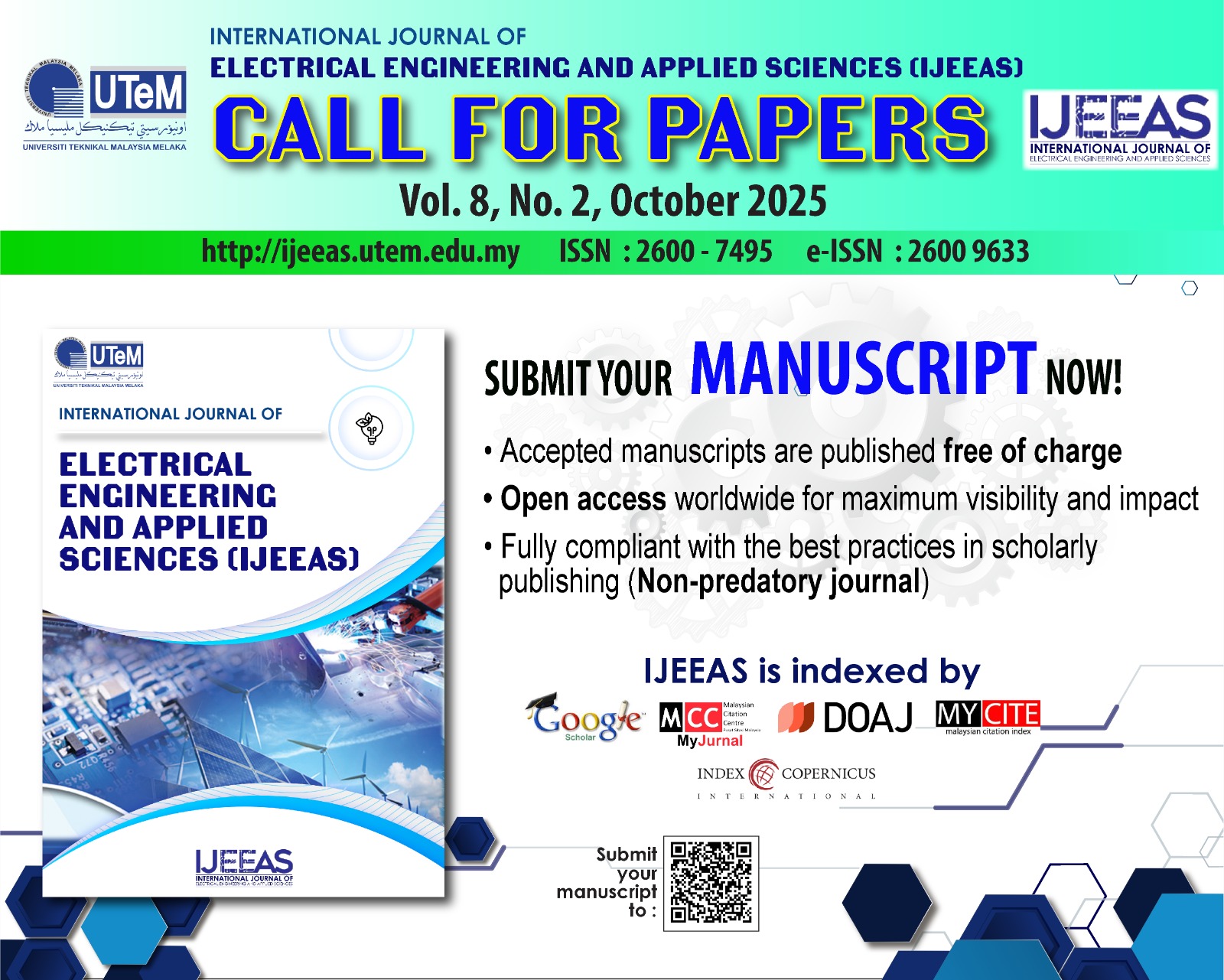Enhancing Reactive Power Compensation in Distribution Systems through Optimal Integration of D-STATCOM using the Pelican Optimization Algorithm
DOI:
https://doi.org/10.54554/ijeeas.2024.7.01.006Abstract
This paper presents a study that introduces the Pelican Optimization Algorithm (POA) as an innovative approach for the strategic deployment of Distribution Static Synchronous Compensators (D-STATCOM) in distribution systems. The primary objectives are to reduce losses and enhance voltage profiles in radial distribution systems. The proposed approach is validated on both the IEEE 33-bus and IEEE 69-bus systems through comprehensive simulations using MATLAB software. The results demonstrate exceptional performance, showcasing a remarkable 29.40% and 32.30% reduction in active power losses for the respective systems. Furthermore, a comparative analysis against recent methods from the literature highlights the superior efficacy of the POA algorithm, revealing reductions of 29.15% and 32.00% in active power losses for the IEEE 33-bus and IEEE 69-bus systems. These findings substantiate the efficiency of the POA algorithm in strategically positioning and sizing D-STATCOM, making significant strides toward minimizing losses and improving voltage profiles in distribution systems. In summary, this study provides valuable insights into the field of power systems optimization, offering a pioneering solution for the effective deployment of D-STATCOM to enhance the overall performance of distribution networks.
Downloads
Downloads
Published
How to Cite
Issue
Section
License
Authors who publish with this journal agree to the following terms:
- Authors retain copyright and grant the journal right of first publication with the work simultaneously licensed under a Creative Commons Attribution License that allows others to share the work with an acknowledgement of the work's authorship and initial publication in this journal.
- Authors are able to enter into separate, additional contractual arrangements for the non-exclusive distribution of the journal's published version of the work (e.g., post it to an institutional repository or publish it in a book), with an acknowledgement of its initial publication in this journal.
- Authors are permitted and encouraged to post their work online (e.g., in institutional repositories or on their website) prior to and during the submission process, as it can lead to productive exchanges, as well as earlier and greater citation of published work (See The Effect of Open Access).







